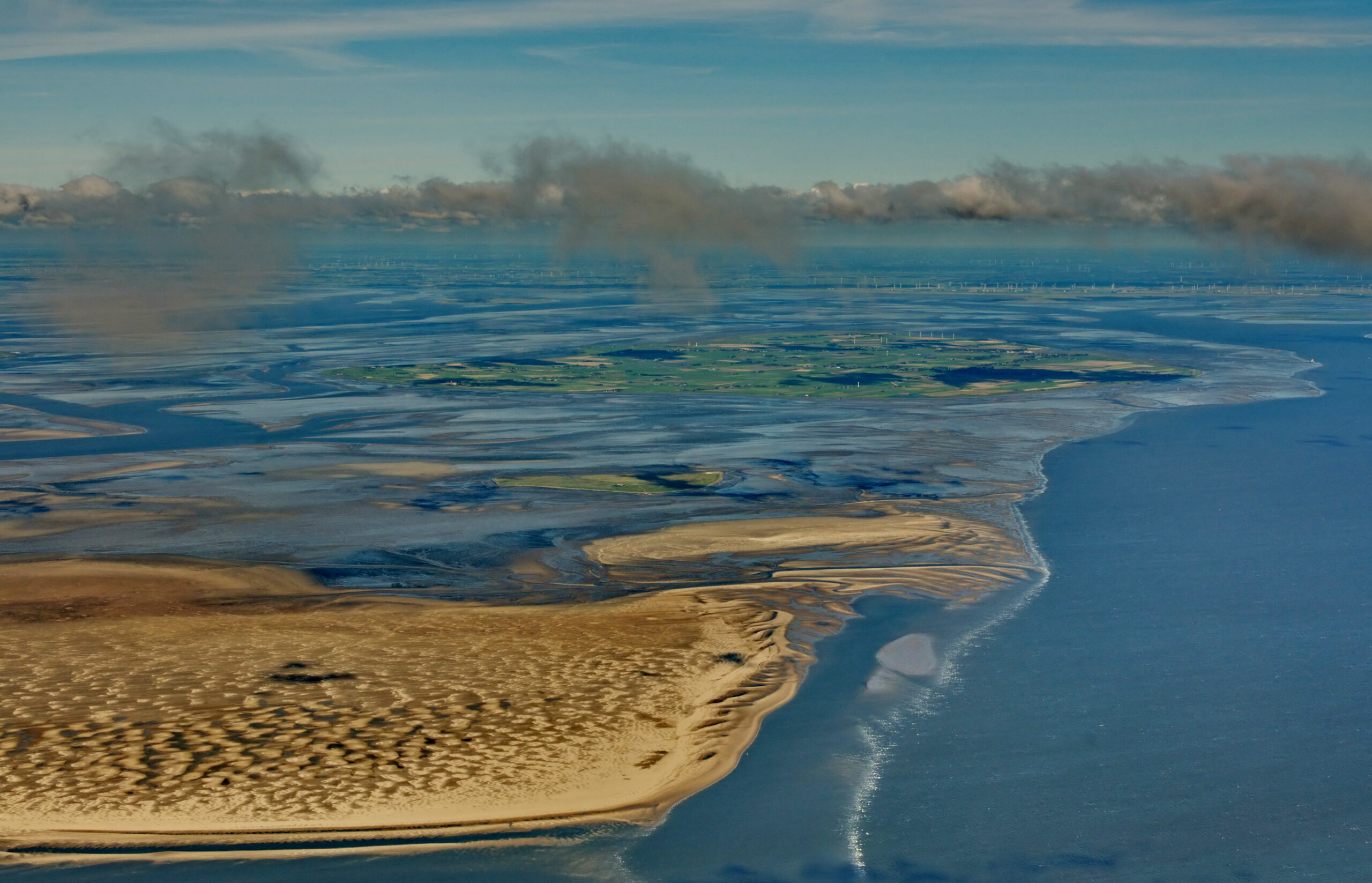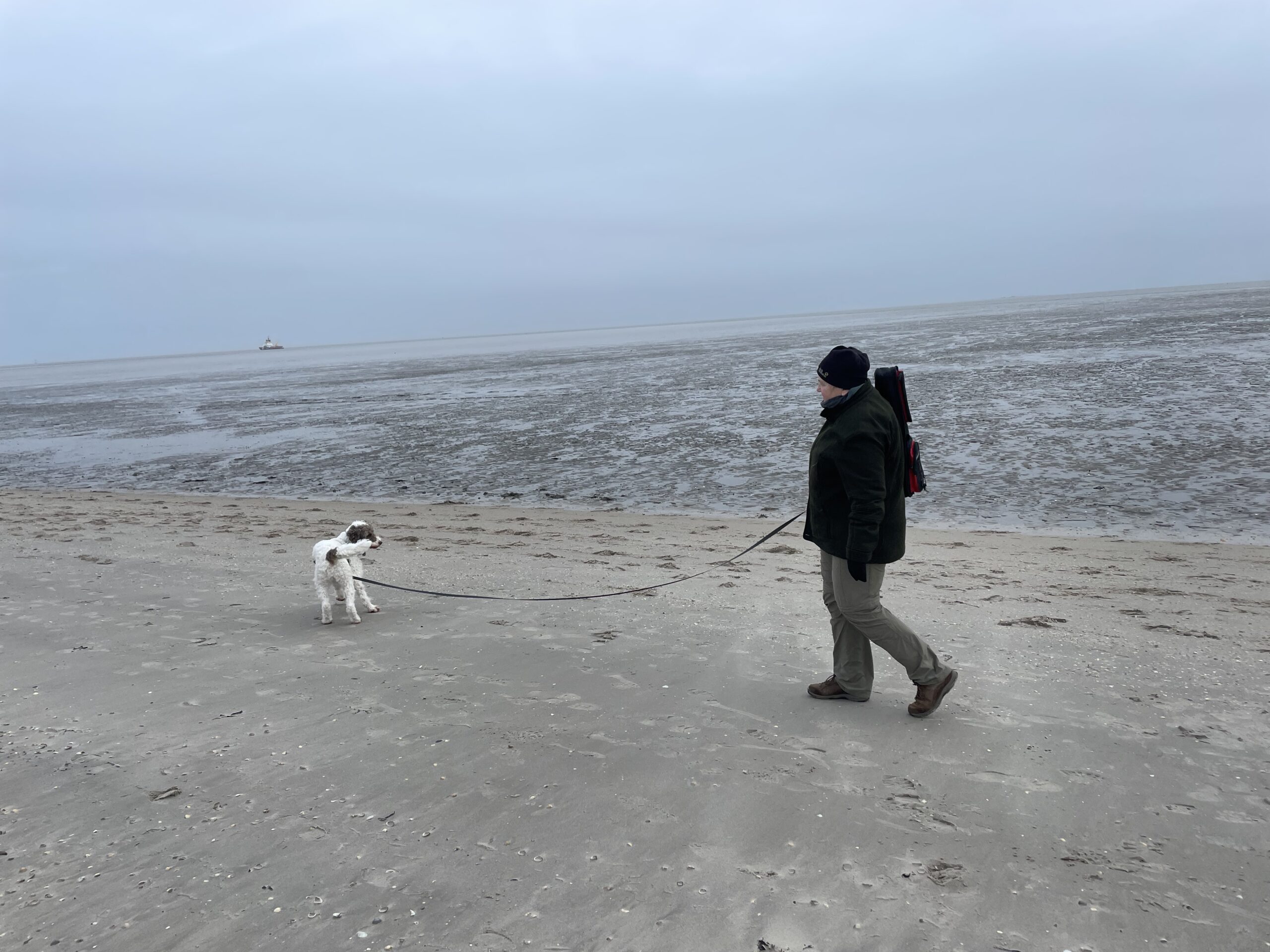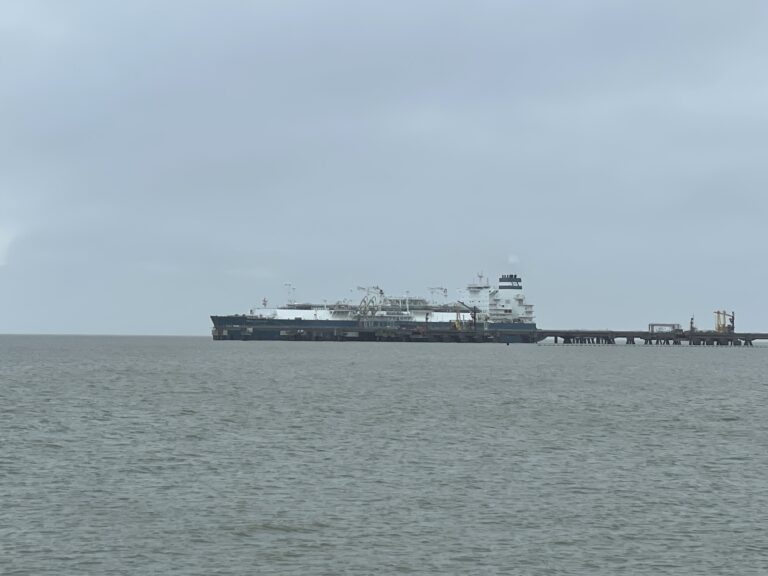
Ralf Roletschek/Wikimedia Commons

Ralf Roletschek/Wikimedia Commons
HOOKSIEL– Brita Moosmann loves the outdoors. The hotel menu-engineer walks on the Wadden Sea beach with other Hooksiel neighbors and their pets. Moosmann also often kayaks with her wife and their dog, Meggie.
These outdoor adventures, though, have been disturbed by the newly implemented liquified natural gas (LNG) terminal right off shore. The terminal, which looks like a large ship, is used to unload the cargo and hold the imported LNG.
While kayaking, Moosmann has to keep her guiding light dimmed. The terminal, on the other hand, “glows like Tokyo or Times Square,” she said. The walks are now peppered with the smell of diesel and construction-like noises above four decibels each night.

“You see it wherever you travel around here. What used to be darkness is a bright glow in the sky,” Moosmann said.
Moosman and her wife, Gabriela Rieberer, are just two of many Hooksiel residents whose dark nights were transformed by liquefied natural gas (LNG) terminals in Germany, as the country faces an ongoing energy crisis due to the war in Ukraine.
Hooksiel residents previously voted against the placement of an LNG terminal in 2020, according to Moosmann. Most voters, including Moosmann and Rieberer, said no to industrializing the harbor. Reiberer said living near a terminal now, after years of fighting against one, is “heartbreaking.”
“They said we have no choice. We’re in a war,” Rieberer said. “So what do you say? It’s fear mongering.”
Moosmann and Rieberer sang along with scores of neighbors and protestors as the first LNG shipment arrived earlier this year. The terminal receives supercooled and pressurized gas in a liquid state. Once LNG is regasified at room temperature, it can be used to generate electricity, heat and fuel buildings.
At the time of the Russian invasion into Ukraine, almost 40 percent of Germany’s gas was coming from Russia, according to Christian von Soest, the head of peace and security research programming at the German Institute for Global and Area Studies.
The two countries’ natural gas relationship lasted for almost 50 years.
Berlin began purchasing more natural gas last year starting Feb. 24 from Norway, the United States and the United Arab Emirates. Germany broadly reduced its gas purchases from Russia by about 20 percent last year.
The German government scrambled to facilitate the infrastructure for LNG, building its first floating terminal in record time, opening it on Nov. 15, 2022. There are now five leased German LNG terminals both on- and offshore and talks of more.
Globally, LNG trade was expected to grow by 5 percent in 2022, according to the International Energy Agency’s report last October. This creates a direct impact on areas like Hooksiel.
“Our progress is torn to pieces,” said Stefanie Eilers, a conservationist in Wilhelmshaven.
Germany has also temporarily reactivated old oil- and coal-fired power stations as well as extended the use of the country’s last three nuclear power plants until mid-April.
Climate change advocacy groups and scientists opposed this extensive expansion of fossil fuel infrastructure.
“There is no need for LNG terminals in Germany,” said Reinhard Knof, who operates a statewide environmental group in Schleswig-Holstein. “It’s bad for the climate and it’s bad for the area.”

Knof noted the effects on the tourism industry as well. People are not able to enjoy a peaceful vacation at the beach if their view is an LNG terminal that pollutes the air and water. The legal noise level at night around the Baltic Sea is zero decibels, according to Sauerwein. Noise in the area has increased to four decibels since the construction of the terminals.
“We’re going to lose (the tourists),” Knof said. “The minister of agriculture and environment said they don’t know from where the noise is coming. This is a wonderful joke.”
LNG has a bigger greenhouse gas footprint than ordinary gas. The power source needs to be chilled to minus 259 degrees Fahrenheit, shipped and turned back into gas, which creates more carbon and increases the potential for methane leakage. Small amounts of LNG molecules are converted back to its gaseous form as the LNG carrier is shipped and absorbs heat from outside air. The regasified molecules are often directed to power the ship’s engine, but the transportation still has the potential to worsen climate change.
Even more so, inhaling LNG and associated vapor may cause a loss of consciousness or even death when a victim’s lungs are filled with insufficient amounts of oxygen, according to Philadelphia Gas Works. Many governments globally, however, tout LNG as not harmful to the environment.
“The new developments pose a real threat to the environment,” said Rainer Sauerwein, an environmental activist.
But there doesn’t seem to be an end in sight for Rieberer and Moosmann, or other German residents. The German government is allowing permits as part of the acceleration of the use of natural gas until 2043. Rieberer said this has gone forward without any environmental consultation.
“The technology has not yet been sufficiently researched and tested,” said Rita Fette, who lives near the Wadden Sea. “I am concerned about the continued existence of the Wadden Sea and its creatures.”
At the end of 2022, Germany’s RE Supply & Trading signed a 15-year contract with Sempra Infrastructure to purchase approximately 2.25 million tons of LNG per year. This equates to about 30 cargoes of LNG, or 3 billion cubic meters of natural gas, per year. Operations are expected to start during 2027.
Agencies like the Germany Federal Ministry of Economic Affairs and Climate Action, see the use of gas as a “bridge” toward more sustainable resources.
“We can only set the framework,” said press officer Katharina Grave. “As long as gas was cheap there wasn’t a large push to [set up greener infrastructure] fast. Obviously it takes time.”
Sauerwein said that the consumption of gas shows how little the government cares about the issue.
“We’ve never had such an increase in environmental destruction as we’ve had now,” he said.
This story was featured in our series, A Greener Zeitgeist: Medill Reports from Germany.